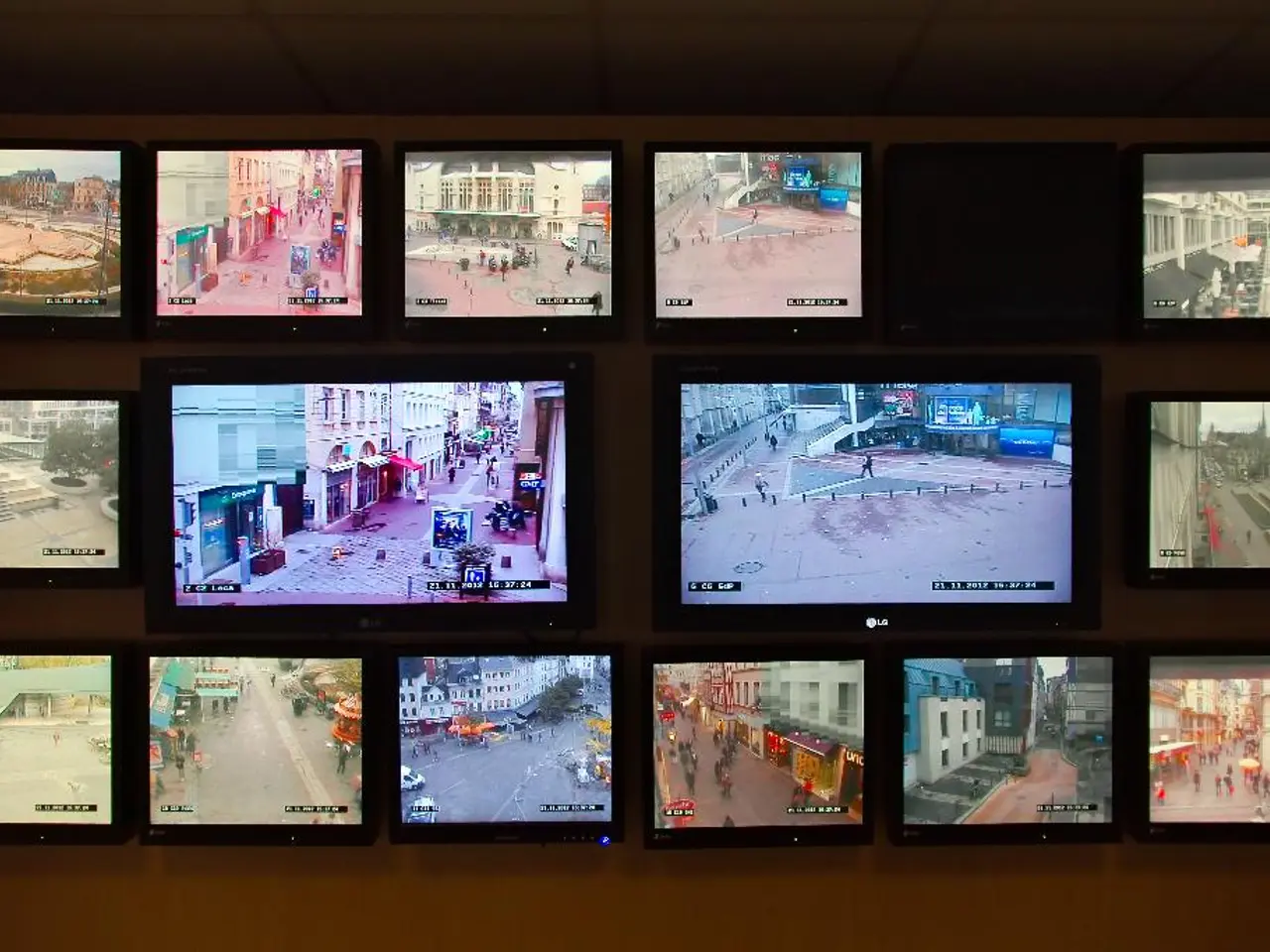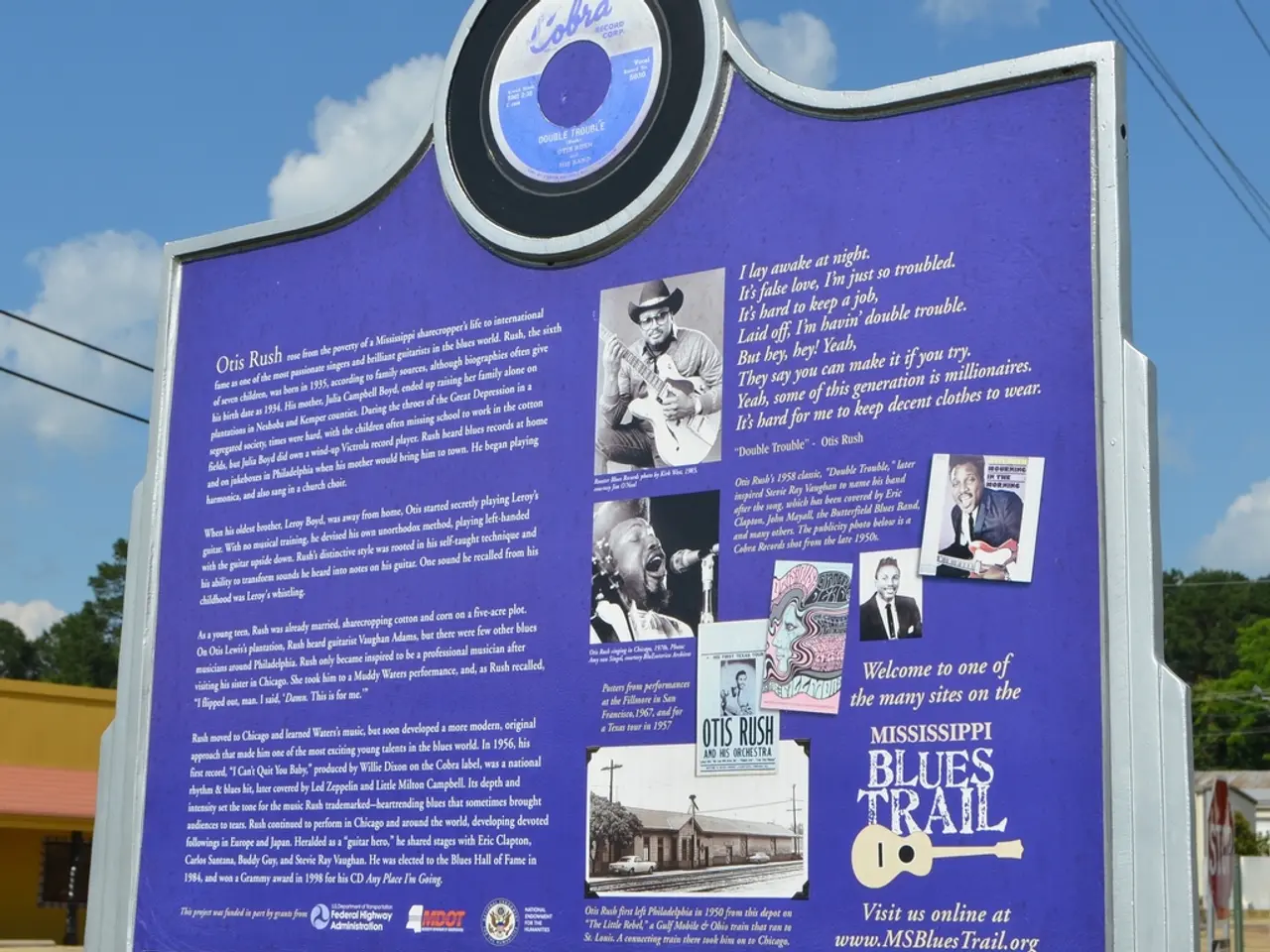Discusses Golden Dome Priorities with Guetlein, Affirms Missile Interceptors as Practical Solutions
Golden Dome Missile Defense Project Gains Momentum
The Golden Dome missile defense project, intended to create a comprehensive air and missile defense shield for the U.S. homeland, is making significant strides forward. General Michael A. Guetlein, the newly appointed direct reporting program manager for the project, has been granted sweeping powers to tackle the project and has already begun his work.
According to General Guetlein, the first line of effort will be to create a command-and-control network for the project. This network will be a crucial part of the Joint All-Domain Command and Control, which is a key component of General Guetlein's plan for the Golden Dome project.
The Space Force is conducting market research on interceptors for the project, and Northrop Grumman has already started ground testing on an interceptor. Lockheed Martin plans an orbital demonstration of space-based interceptors by 2028, aligning with the timeline for initial Golden Dome capabilities.
Space-Based Interceptors (SBIs) are designed to intercept missile threats earlier in their trajectory by launching interceptors from orbiting satellites. This early engagement is considered a key advantage over existing land-, sea-, and air-based interceptors. The Department of Defense is strongly supporting this development, emphasizing the importance of space-based interceptors to defeat ballistic and hypersonic missile threats in their boost phase.
However, there has been skepticism and caution regarding the cost and feasibility of the full Golden Dome vision. The Congressional Budget Office has estimated that deploying a space-based interceptor constellation capable of countering a limited missile attack could cost upwards of $542 billion. Some experts advocate progressing incrementally by first establishing enhanced sensor and ground-based interceptor capabilities before expanding to space-based systems.
Despite these challenges, General Guetlein remains optimistic. He believes that the successful execution of the Golden Dome project requires a level of national effort and coordination on par with the Manhattan Project. He values "reverse industry days" for solving hard problems in the project and plans to have "incremental demonstrations" of the integrated command and control network every six months.
The idea of space-based interceptors is the most attention-grabbing aspect of the Golden Dome project. President Donald Trump has set an ambitious goal for the project to field a capability by the end of 2029. To meet this goal, General Guetlein plans to focus on connecting existing systems across the armed forces. The technology that would make Golden Dome possible already exists, according to General Guetlein, and he is determined to make the project a reality.
General Guetlein made his comments at a Space Foundation conference, where he also emphasized the importance of cooperation with industry and the use of "novel ideas like prize activities" to develop interceptors. The Department of Defense is considering these approaches to tackle the biggest technical challenge for the Golden Dome project, SBIs, and ensure the project's success.
- The Space Force, working in collaboration with industries like Northrop Grumman and Lockheed Martin, is conducting research and testing on interceptors for the Golden Dome missile defense project.
- General Guetlein, the project manager, values novel ideas and is considering prize activities to develop space-based interceptors, a essential component of the Golden Dome project.
- The Pentagon is supporting the development of Space-Based Interceptors (SBIs) to counter ballistic and hypersonic missile threats in their boost phase, following President Trump's ambitious goal for the project.
- The Golden Dome project, with its focus on space-based interceptors, aligns with the Space Force's mission, contributing to aviation and defense technology, and the broader field of space-and-astronomy.
- The successful execution of the Golden Dome project, as envisioned by General Guetlein, requires a significant national effort, reminiscent of the collaborative spirit that led to the Manhattan Project's success in science and technology.




